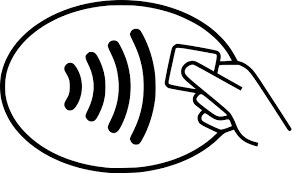As businesses continue to adapt to the digital age, contactless payments have surged in popularity, driven by the need for convenience and enhanced security. This trend has been accelerated by the global pandemic, which heightened the demand for hygienic, touch-free payment methods. In this article, we explore the latest advancements in contactless payment technology and what it means for business owners.
The Rise of Contactless Payments
Contactless payments use Near Field Communication (NFC) technology to allow consumers to make payments by simply tapping their card or mobile device near a point-of-sale (POS) terminal. The convenience and speed of these transactions have made them increasingly popular among consumers and businesses alike.
Benefits of Contactless Payments:
- Convenience and Speed: Transactions are completed in seconds, reducing wait times and improving customer satisfaction.
- Enhanced Security: Contactless payments use dynamic encryption, making them more secure than traditional magnetic stripe cards. Each transaction generates a unique code that cannot be reused.
- Hygiene: Minimizing physical contact with POS terminals helps reduce the spread of germs, an important consideration in the post-pandemic world.
Technological Advancements
The technology behind contactless payments is continuously evolving, offering new features and capabilities that benefit both consumers and businesses.
Mobile Wallets and Wearables:
- Mobile Wallets: Apps like Apple Pay, Google Wallet, and Samsung Pay allow users to store their payment information securely on their smartphones. These apps use biometric authentication (such as fingerprint or facial recognition) for added security.
- Wearables: Smartwatches and fitness trackers equipped with NFC chips enable users to make payments directly from their wearable devices. This adds a layer of convenience, especially for those who prefer not to carry their phone or wallet.
Integration with Loyalty Programs:
- Businesses are increasingly integrating contactless payment systems with their loyalty programs. This allows for seamless earning and redemption of rewards, enhancing customer loyalty and engagement.
Biometric Authentication:
- Emerging biometric technologies, such as fingerprint scanners and facial recognition, are being integrated into contactless payment systems. These technologies add an additional layer of security, making transactions even safer.
Challenges and Considerations
While the future of contactless payments looks promising, businesses must consider certain challenges and factors to ensure successful implementation.
Infrastructure Investment:
- Upgrading to contactless-enabled POS systems requires an initial investment. However, the long-term benefits in terms of speed, security, and customer satisfaction can outweigh these costs.
Consumer Education:
- Not all consumers are familiar with contactless payment technology. Businesses should provide clear instructions and signage to educate customers on how to use these systems.
Security Concerns:
- Although contactless payments are generally secure, businesses must remain vigilant against potential fraud. Regularly updating security protocols and training staff on best practices can help mitigate risks.
Future Trends
The contactless payment landscape is poised for continued growth and innovation. Here are some trends to watch:
Increased Adoption:
- As more businesses adopt contactless payment technology, consumer acceptance and usage will continue to grow. This trend is expected to extend beyond retail to include sectors such as public transportation, healthcare, and entertainment.
Expansion of Digital Currencies:
- The integration of digital currencies and blockchain technology into contactless payment systems could offer new levels of transparency and security. Cryptocurrencies like Bitcoin and Ethereum are already being accepted by some merchants, and this trend is likely to expand.
IoT Integration:
- The Internet of Things (IoT) is set to revolutionize contactless payments. Connected devices, such as smart appliances and vehicles, could enable automated and seamless transactions, further enhancing the convenience factor.
Conclusion
Contactless payments represent the future of commerce, offering unparalleled convenience, speed, and security. For businesses, adopting this technology can lead to improved customer experiences and operational efficiencies. As the technology continues to evolve, staying informed about the latest advancements and trends will be crucial for maintaining a competitive edge.
To stay updated on the latest trends and opportunities in the FinTech sector and explore how you can make informed investment decisions, read more on our blog.



